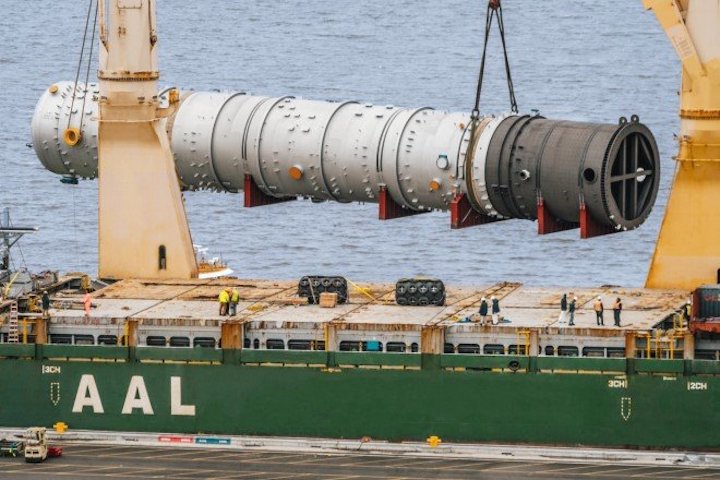Project heavy lift specialist AAL Shipping (AAL) has delivered 456-metric-tonne industrial tower components to the US West Coast. The cargo was loaded in South Korea onboard the 31,000-deadweight heavy lift AAL Pusan and transported across the Pacific to the Port of Everett in Washington on AAL’s enhanced ‘Asia – US Trade Route’. Cargo handling was further complicated by strict Covid-19 restrictions at multiple ports of call, which required AAL’s global team of engineers in Singapore, Performance Optimisation Control Room technicians in Cyprus, and the vessel’s Master and crew communicating seamlessly.
The tower components were transported on behalf of global logistics provider Geodis Freight Forwarding and will form part of a vacuum distillation unit (VDU) at a US petroleum refinery. The unit produces several types of gas oil that are heavier than middle distillates such as jet fuel, kerosene, and diesel. These distillates can be further refined to make products such as light-cycle oil, gasoline, and naphtha.

Yahaya Sanusi, Deputy Head of AAL Transport Engineering, added, "The length of the cargo presented us with very tight clearance between the cranes, so meticulous modelling and simulations were undertaken to ensure the success of our lifting and stowage operations. We also prepared extensive load-spreading modelling, and FE-Analysis of deck structures used to ensure integrity and safety throughout. Our solution complied with stringent DNV ST-N001 Marine Operations Standards (the benchmark for offshore marine operations) and kept costs down for the customer."
Felix Schoeller, Commercial Director of AAL, concluded, "Our Asia–Americas Trade Route sailings are performing very well, parcelling multiple cargo types for our customers on each sailing which allows us to offer significant economies of scale to every shipper, both large and small. Despite the proliferation of container cargoes in the multipurpose shipping sector, we have continued to prioritise our existing multipurpose and project heavy lift shippers."


_-_127500_-_423a5f55223d31c1d41ecf09117d640663008f3b_yes.png)





